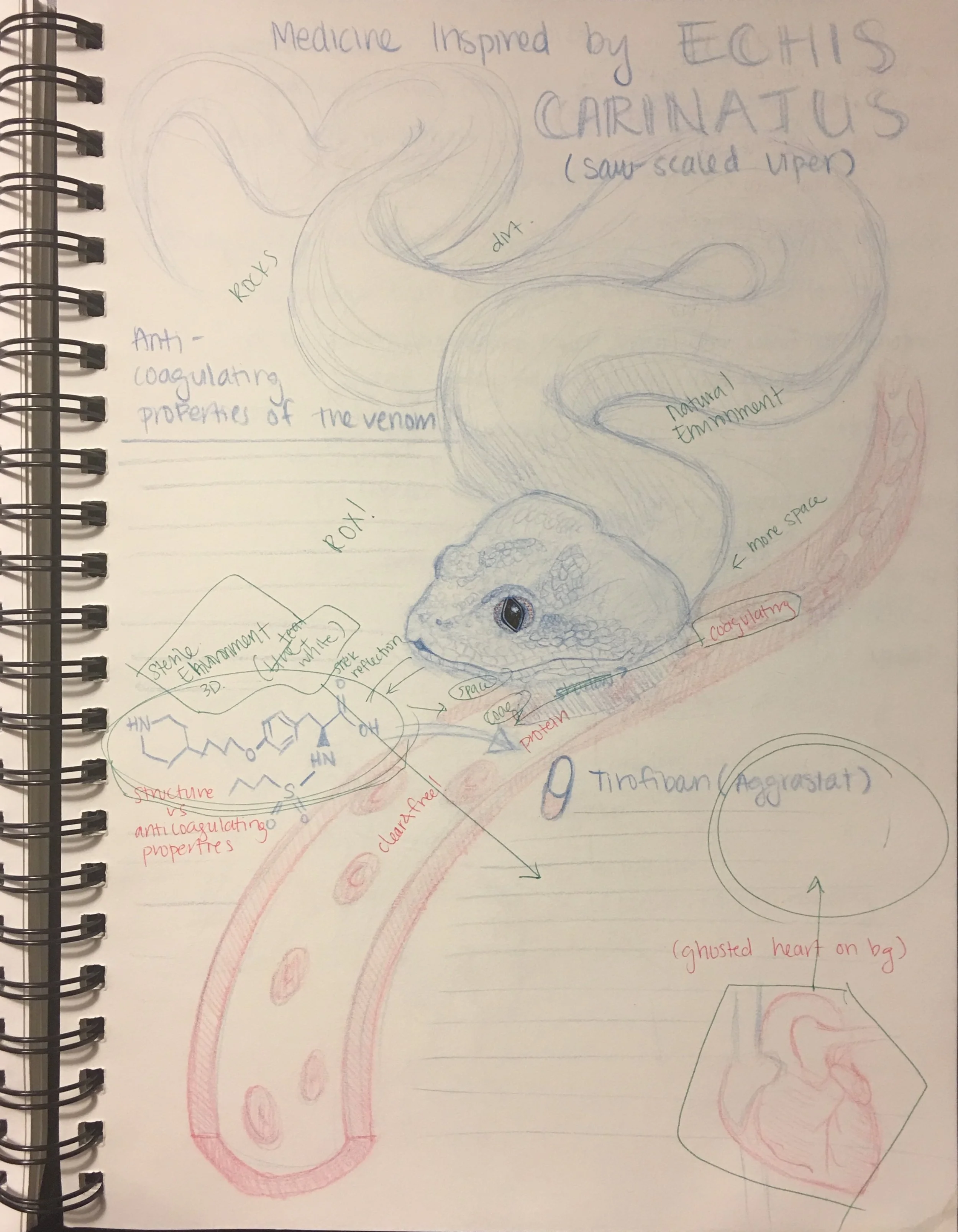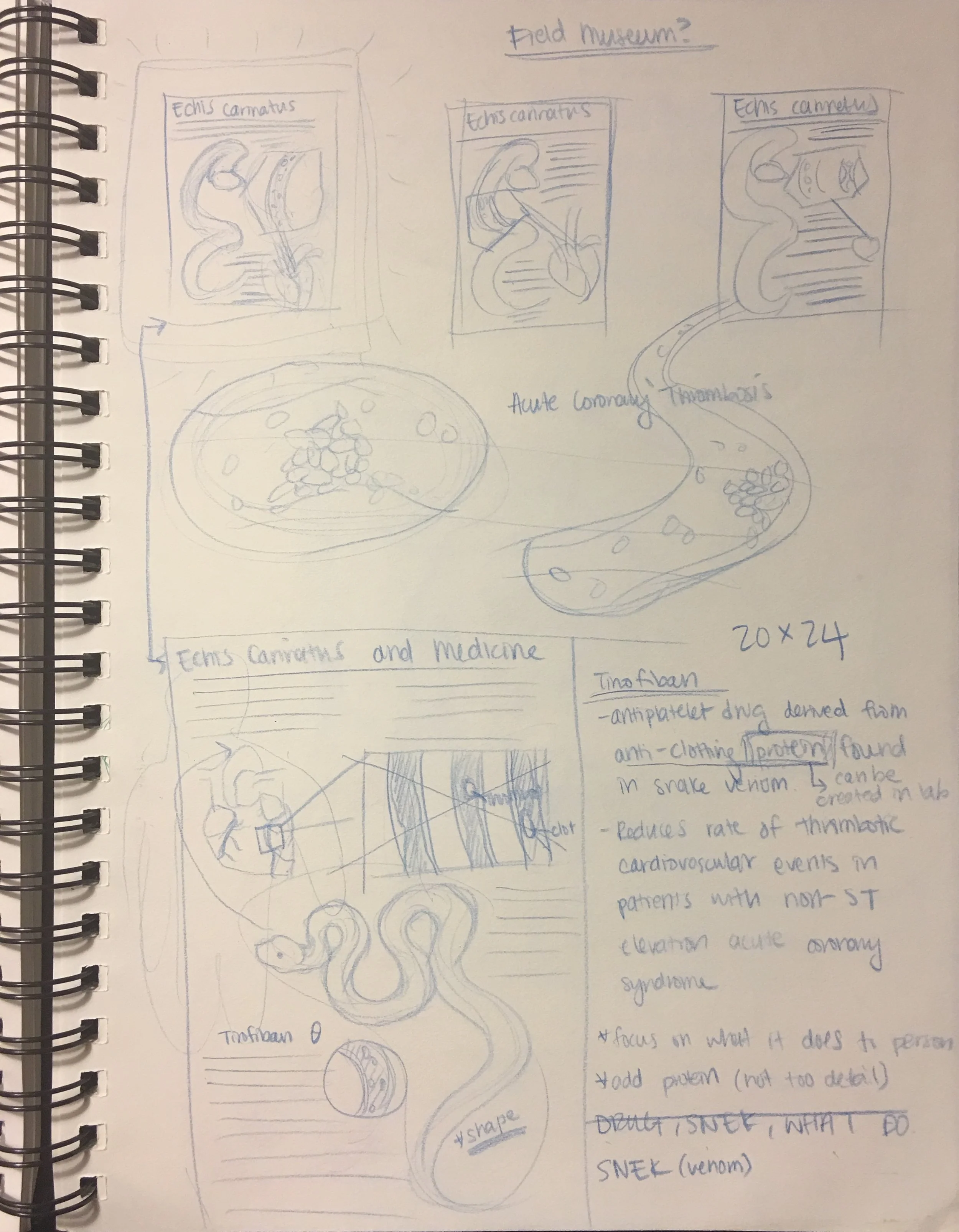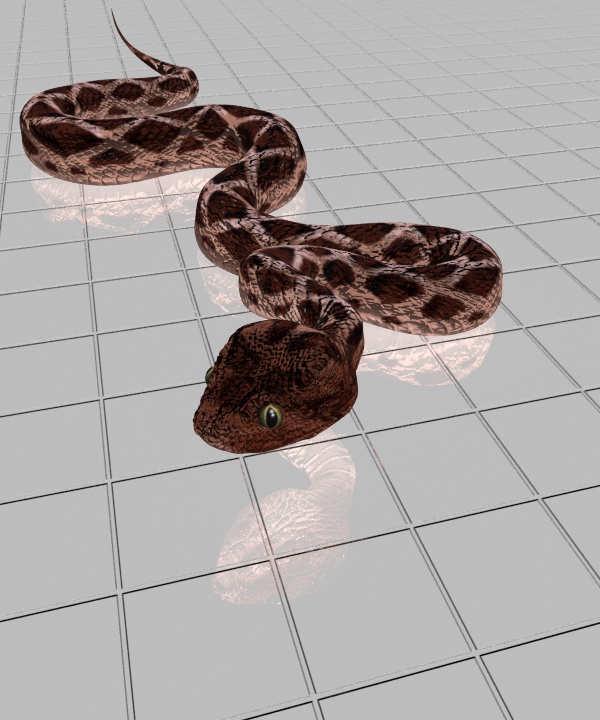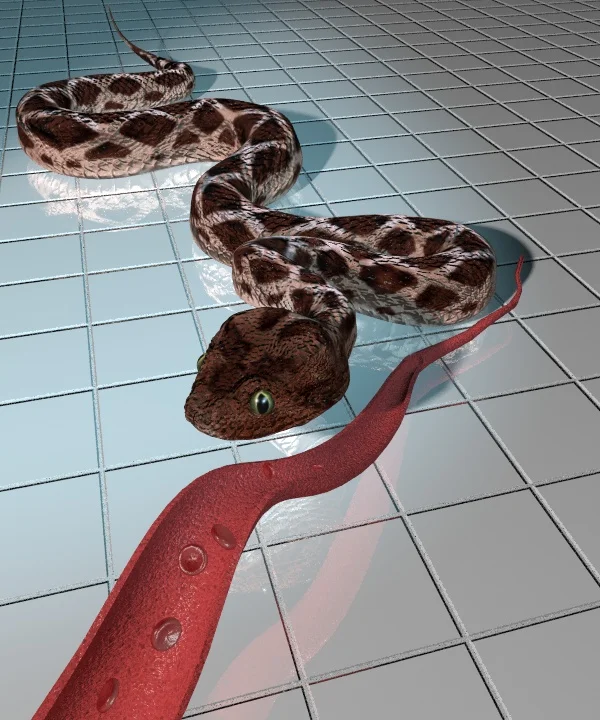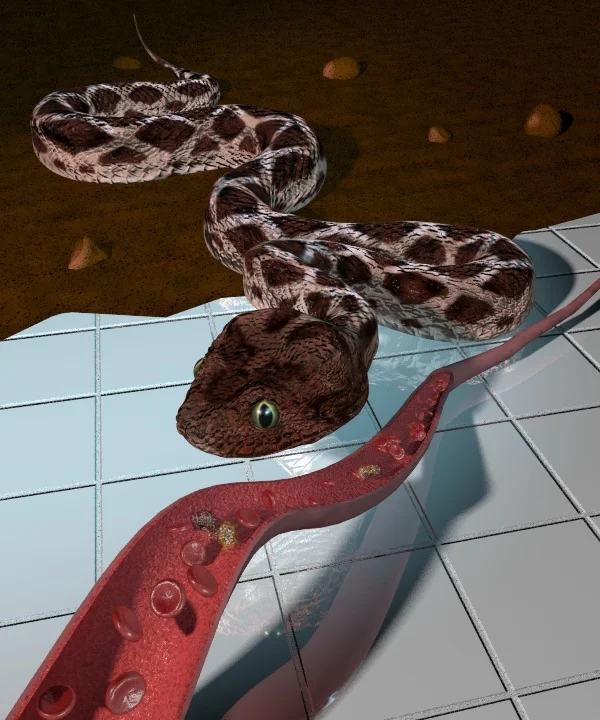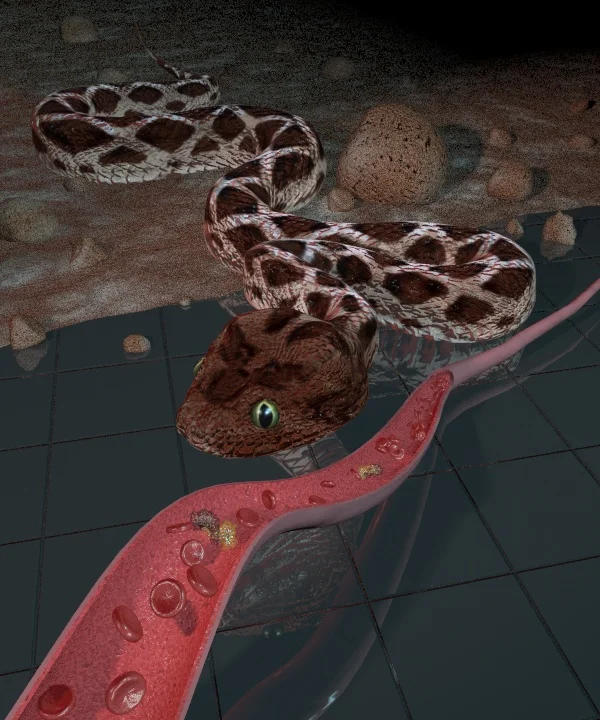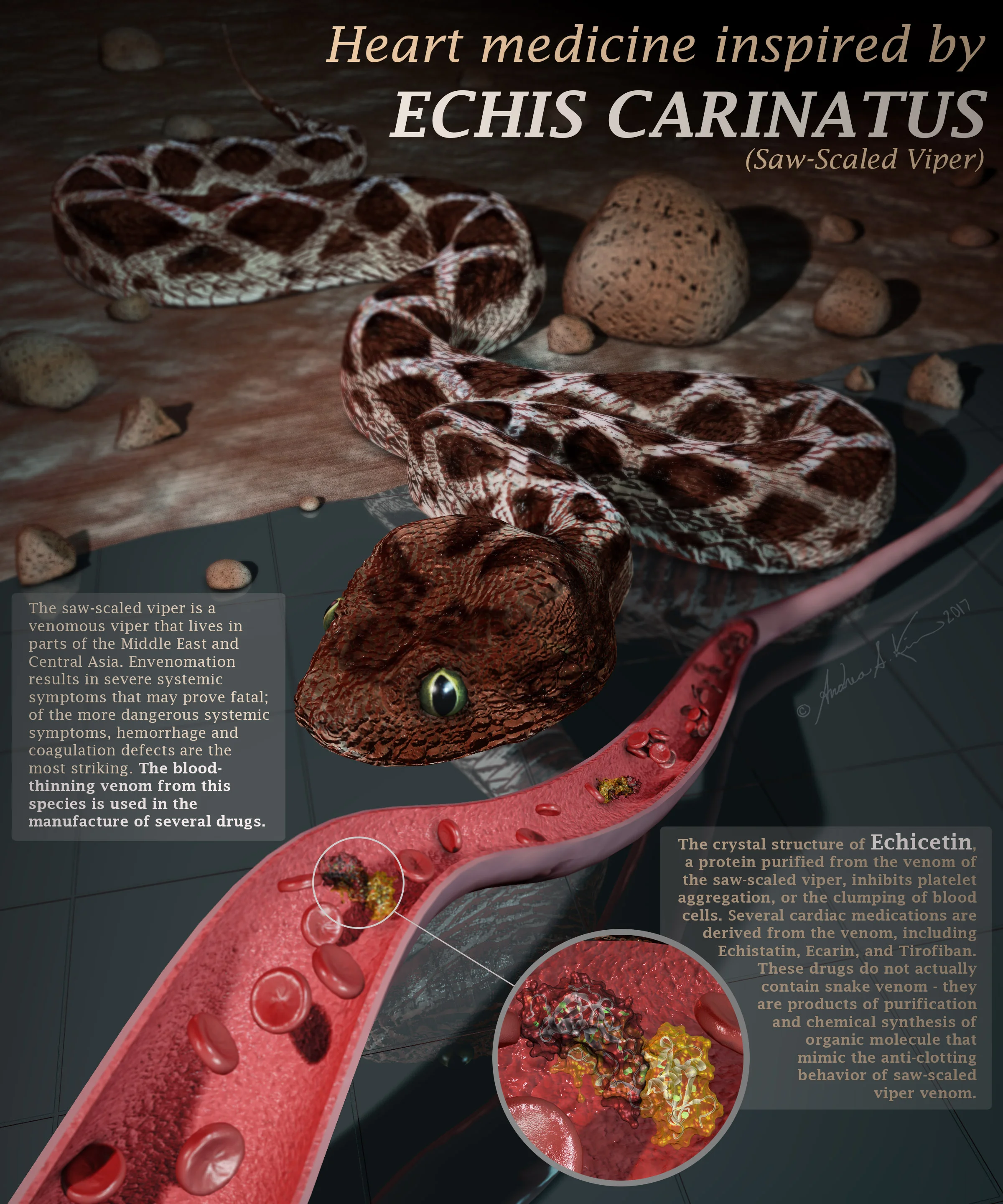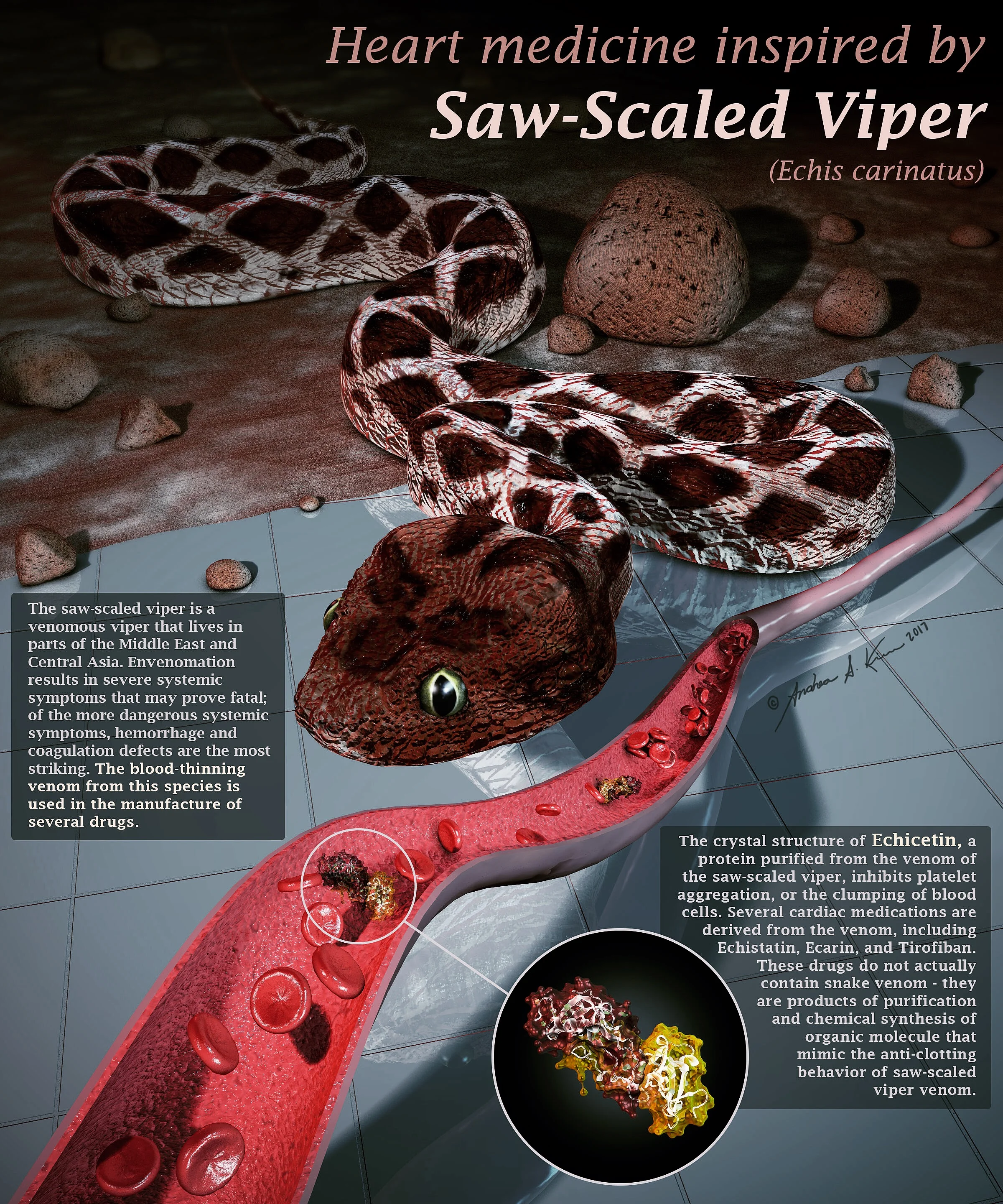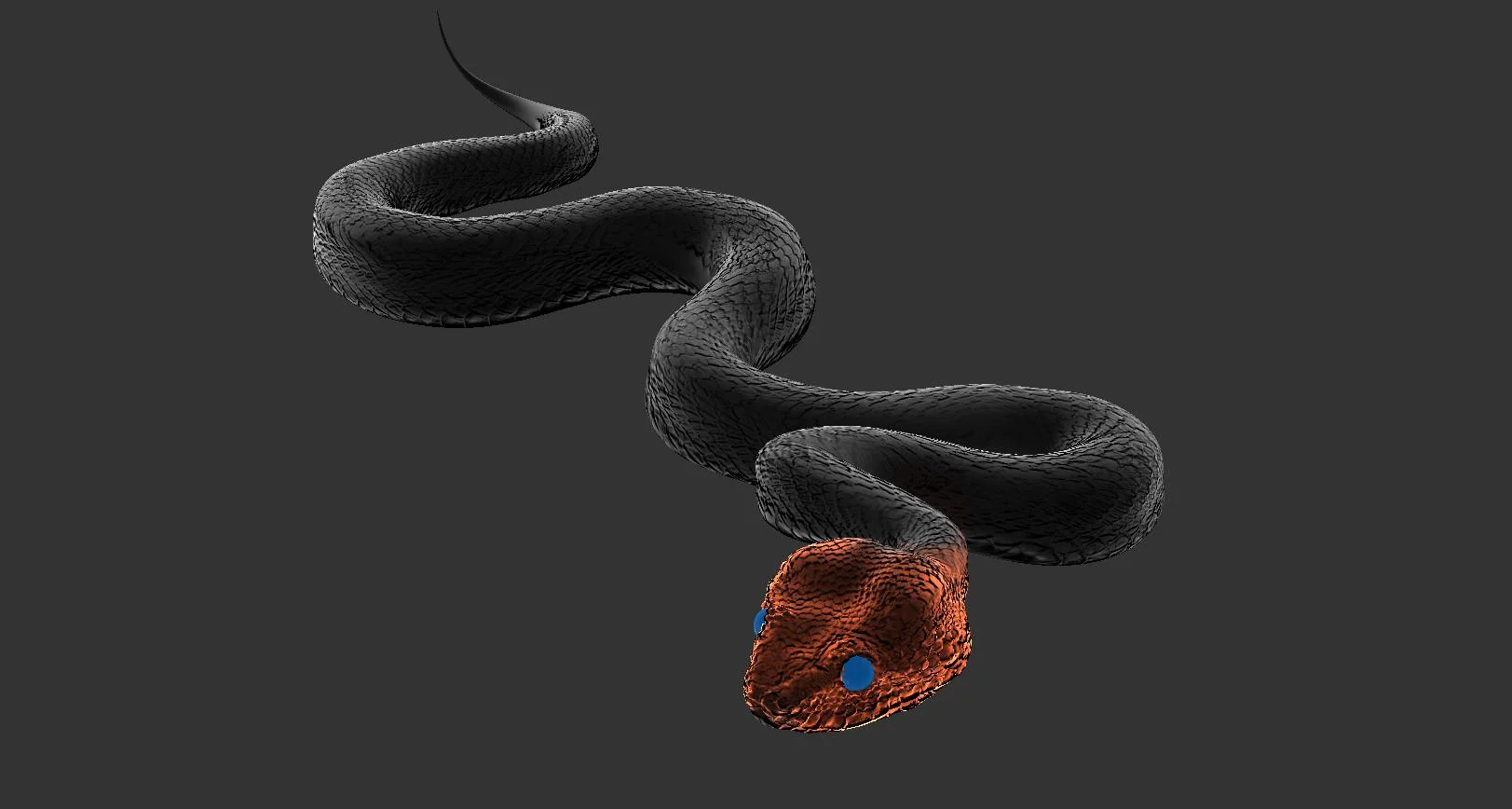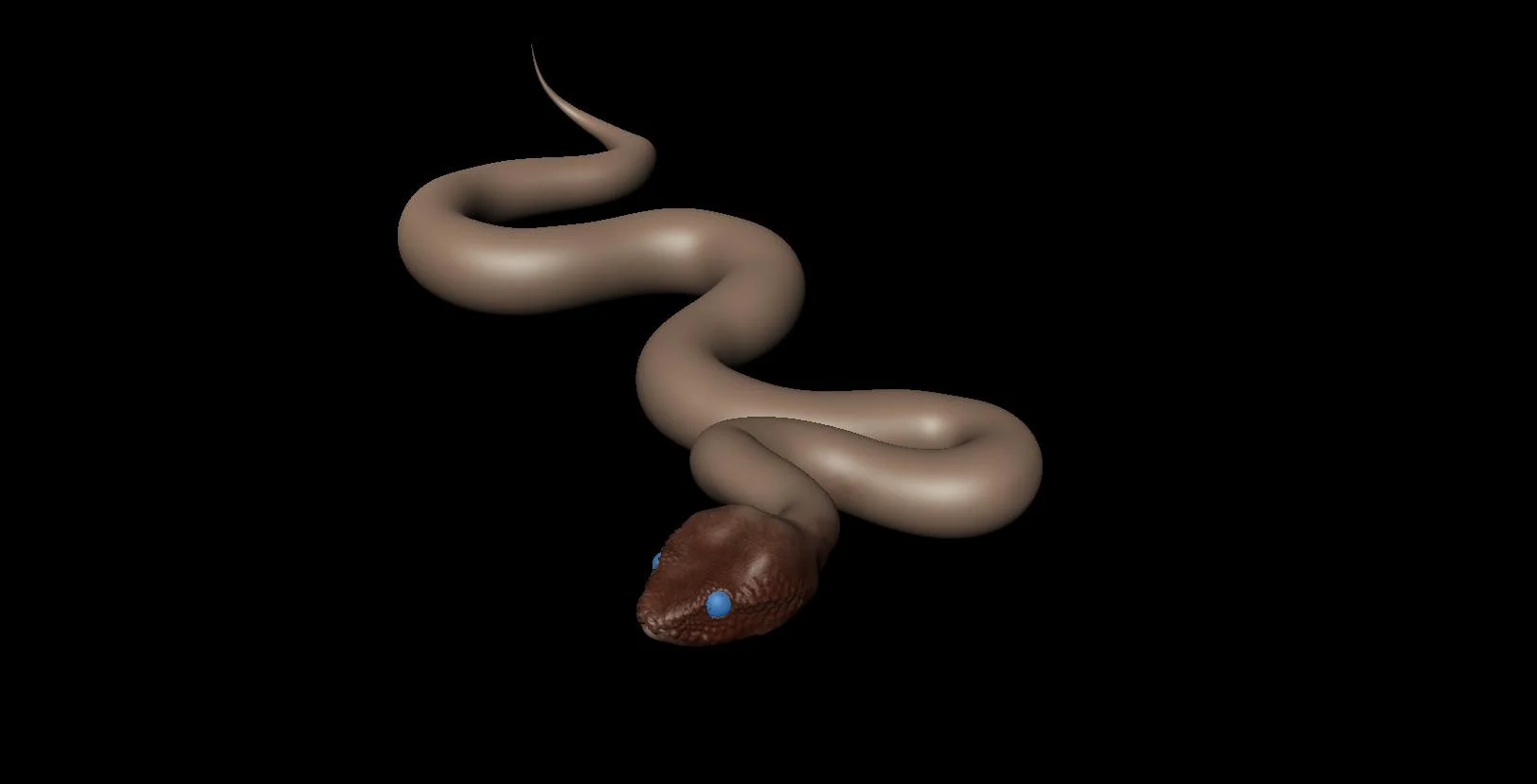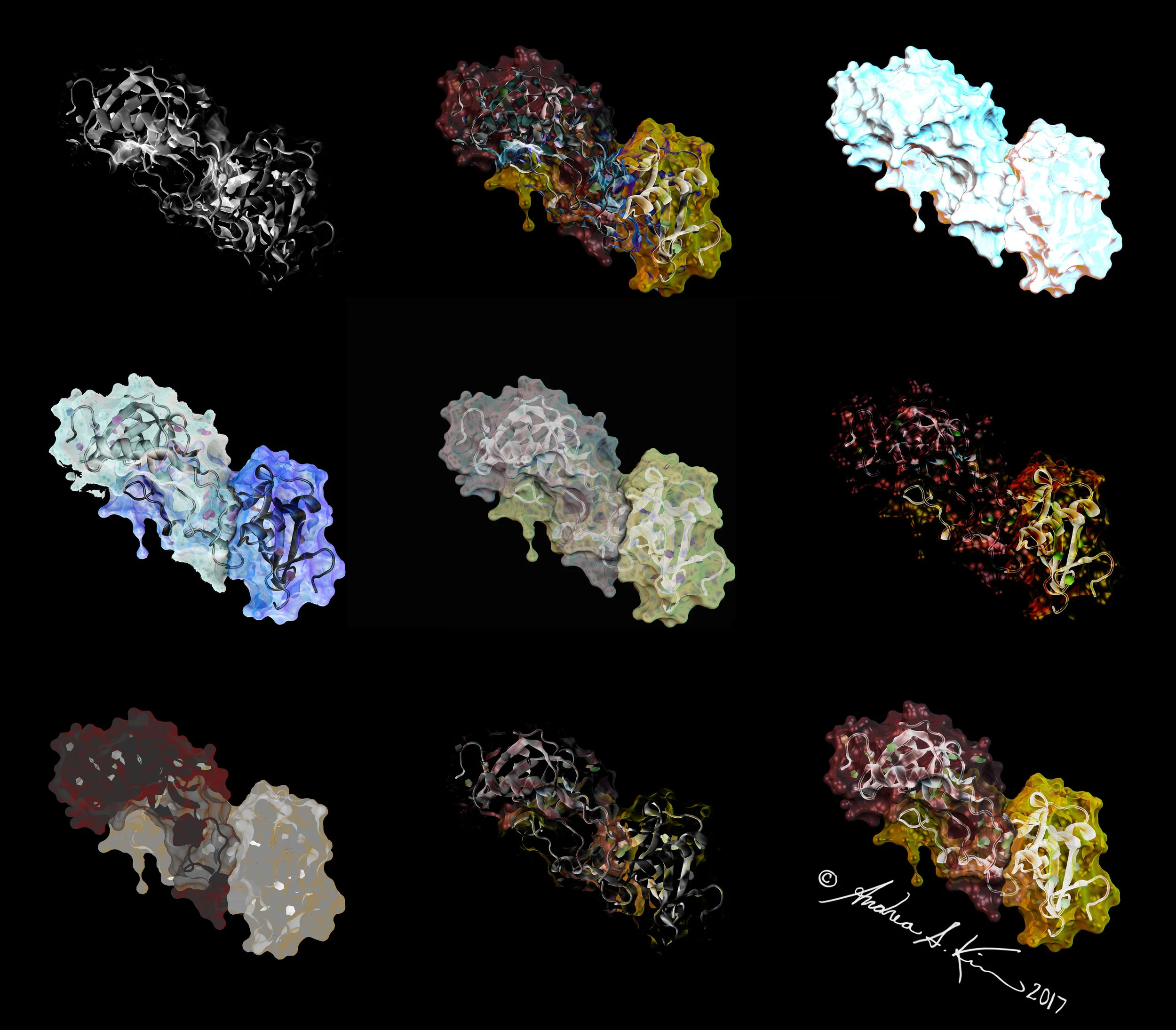Created with Autodesk 3ds Max, Pixologic ZBrush, and Visual Molecular Dynamics; Rendered in Autodesk 3ds Max; Composited in Adobe Photoshop
Sketching and preliminary research
Everything starts with pencil on paper! Various compositions were explored and critiqued upon before coming to a final decision.
Various stages of creation
Notice that I stayed true to my original composition throughout the creation of this entire piece. It doesn't always work out this way, but when it does -- I save a lot of time!
This poster serves to expose the benefits of animal research while also bringing to light the considerable impact saw-scaled vipers have in the field of cardiac medication research. The saw-scaled viper modeled in this poster is seen moving from its normal, desert habitat, to a sterile environment of a laboratory via the contrasting transition from the top, sandy surface to the bottom, reflective surface. The viper was modeled to seem less threatening by keeping its jaws closed and pupils wide. The blood vessel highlights the action of the isolated venom protein, Echicetin, and is organized to continue to lead the viewer’s eyes to the bottom of the page.
Viper Modeling
The viper was sculpted and painted from scratch using Pixologic ZBrush, and then brought into Autodesk 3ds Max. The rest of the scene (excluding the protein) were modeled in Autodesk 3ds Max.
The Protein
Echicetin was obtained from RCSB Protein Data Bank using Visual Molecular Dynamics. Shown here are various render passes exported from Autodesk 3ds Max and composited with Adobe Photoshop.


